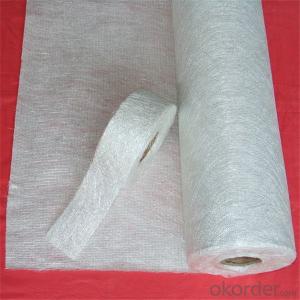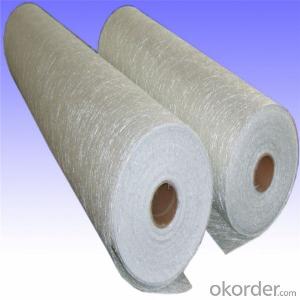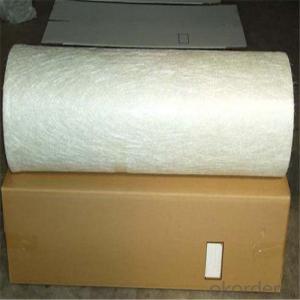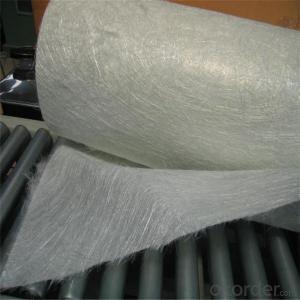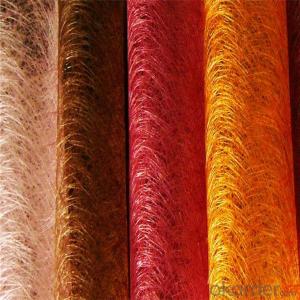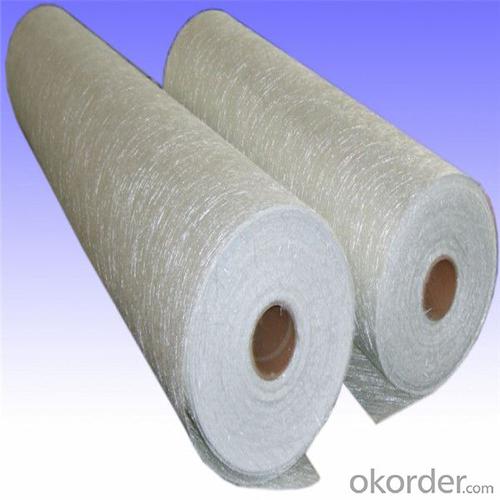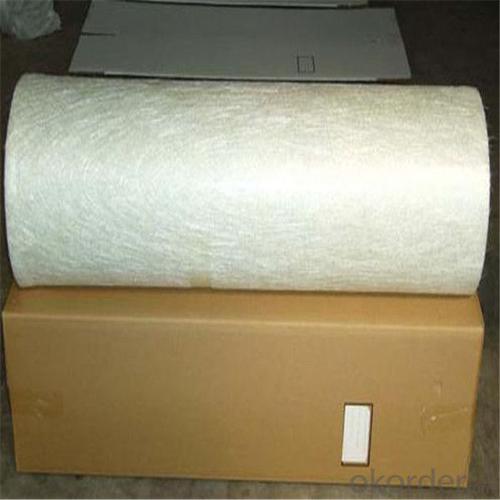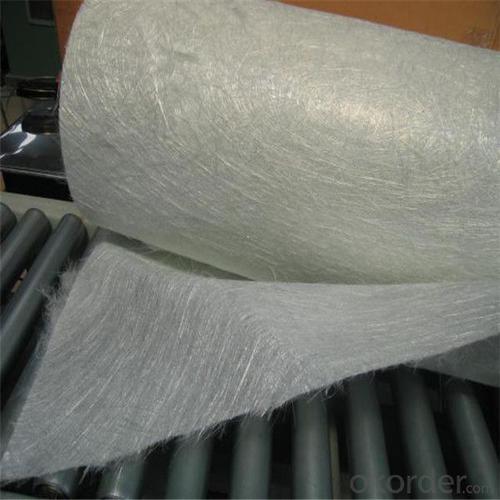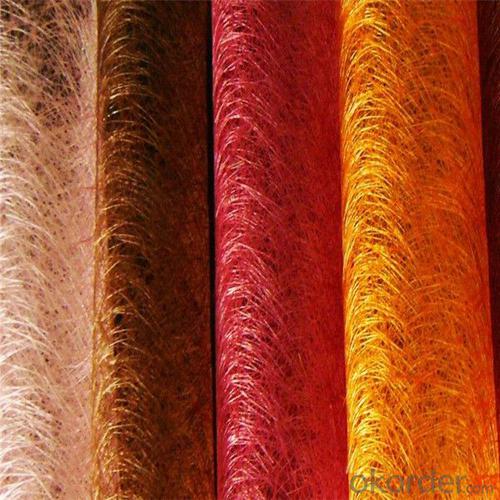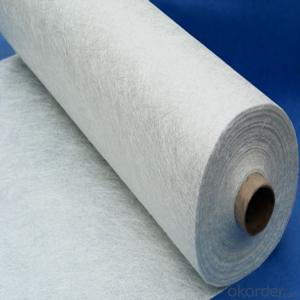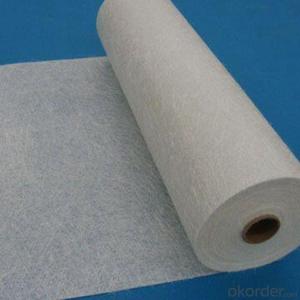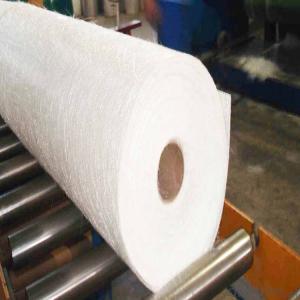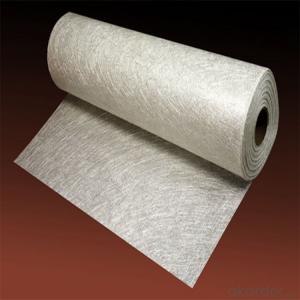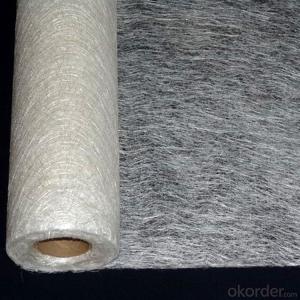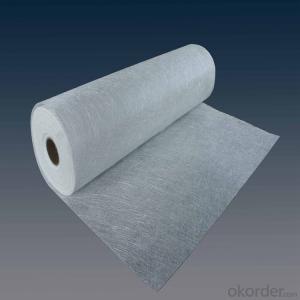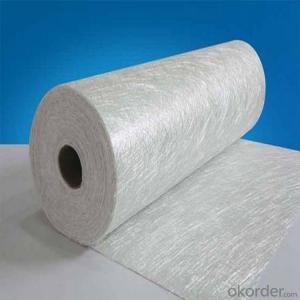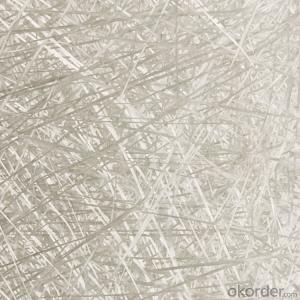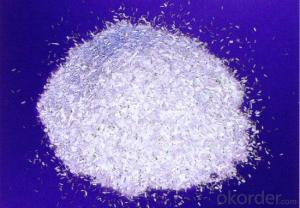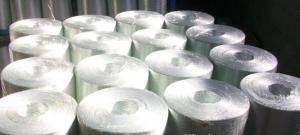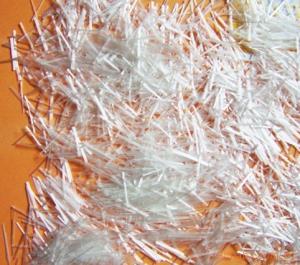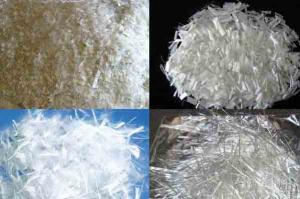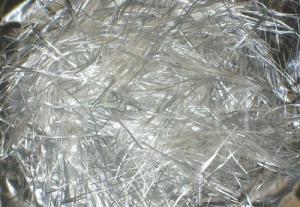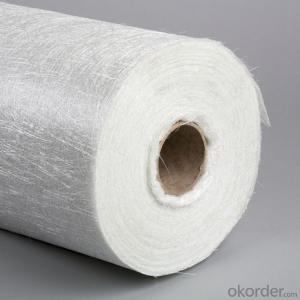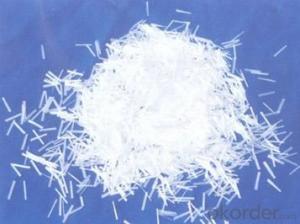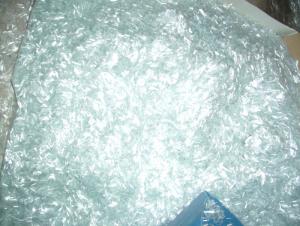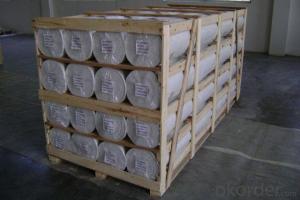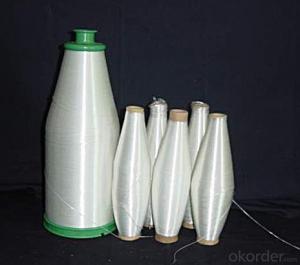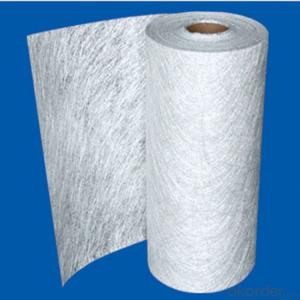150GE-Glass Chopped Fiberglass Strands for Concrete 3/4
- Loading Port:
- Tianjin
- Payment Terms:
- TT OR LC
- Min Order Qty:
- 100 m.t.
- Supply Capability:
- 100000 m.t./month
OKorder Service Pledge
OKorder Financial Service
You Might Also Like
Quick Details
| Technique: | Chopped Strand Fiberglass Mat (CSM) | Dimensions: | 225g/m2-900g/m2 | Fiberglass Type: | E-Glass |
| Place of Origin: | China (Mainland) | Brand Name: | cnbm | Model Number: | 300G-900G |
| moisture: | ≤0.2% | combustion content: | 2.1-6.3% | binder type: | emulsion or powder |
| width: | 1040,1270,2080mm |
Packaging & Delivery
| Packaging Details: | plastic bag then carton then pallet |
| Delivery Detail: | 15 days after payment |
Advantage
1. Chopped strand mat is made up from fiberglass chopped strands bonded with powder binder or emulsion binder
2. Wet out faster and easy of handling
3. Good choppability
4.thickness uniformity
Apllication
fiberglass chopped strand mat
It is used for processing and manufacturing FRP products with getting through hand lay up process, filament winding process and press molding. Typical products is including bathroom accessories, pipe, building material, automobile, furniture, vessel, cooling towers and other FRP products
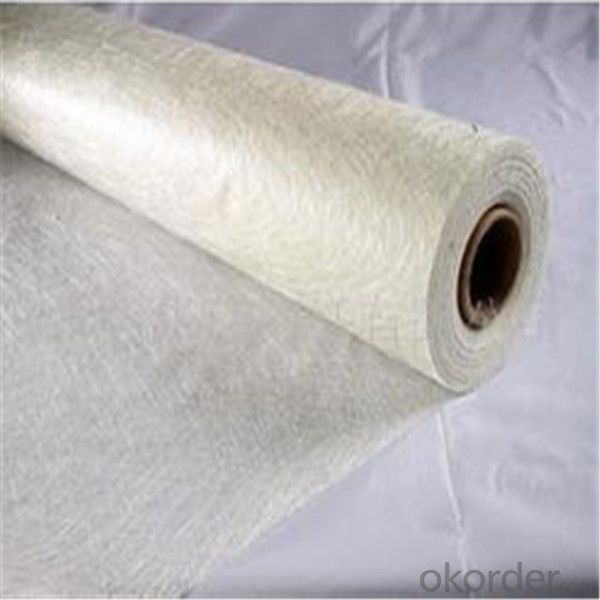
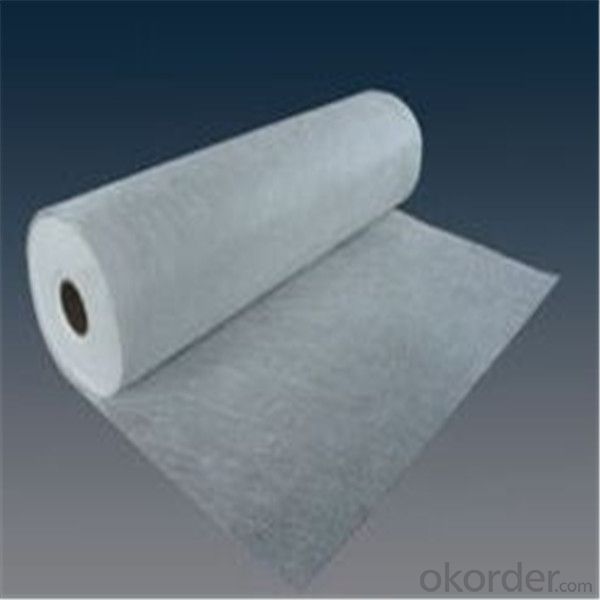
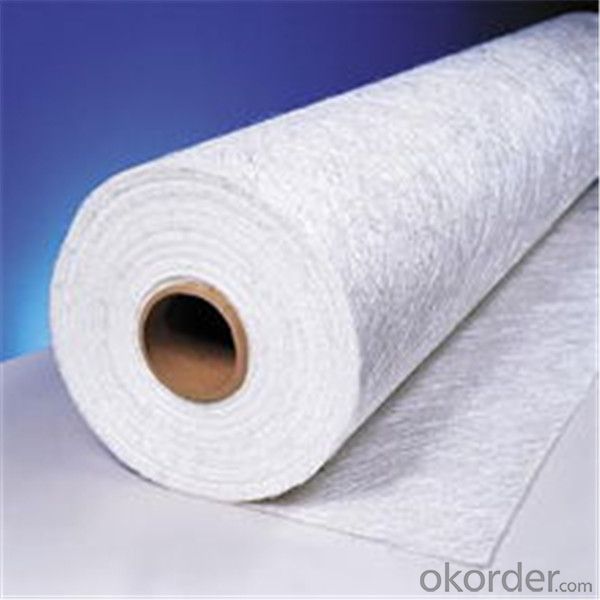
- Q: What are the different types of glass fibers used in chopped strand?
- There are several types of glass fibers used in chopped strand, including E-glass, S-glass, C-glass, AR-glass, and R-glass. Each type has its own unique properties and is suitable for different applications based on factors like strength, chemical resistance, and thermal stability.
- Q: How does the fiber orientation affect the manufacturability of chopped strand composites?
- The fiber orientation significantly affects the manufacturability of chopped strand composites. The orientation of the fibers determines the mechanical properties and performance of the final product. Proper alignment and distribution of fibers during manufacturing ensure uniform strength, stiffness, and dimensional stability. It also affects the ease of processing, mold filling, and the overall quality of the composite.
- Q: How is fiberglass chopped strand used in the construction industry?
- Fiberglass chopped strand is widely used in the construction industry for various applications. One of the primary uses of fiberglass chopped strand is in the production of fiberglass reinforced polymers (FRP) and composites, which are extensively used in construction. In the construction industry, fiberglass chopped strand is commonly used as a reinforcement material in concrete and mortar. It helps enhance the strength, durability, and flexibility of these materials, making them more resistant to cracks, impacts, and other forms of damage. By incorporating fiberglass chopped strand into the concrete or mortar mix, the resulting composite material becomes lighter, stronger, and more resistant to weathering and corrosion. This is particularly beneficial in construction projects that require high-performance materials, such as bridges, tunnels, and precast concrete elements. Moreover, fiberglass chopped strand is also utilized in the manufacturing of insulation materials used in buildings. It is commonly added to insulation boards, panels, and spray foams to improve their thermal, acoustic, and fire-resistant properties. Fiberglass chopped strand helps to reduce heat transfer, noise transmission, and fire spread, thus enhancing the energy efficiency and safety of buildings. Furthermore, fiberglass chopped strand is employed in the production of various construction components, such as pipes, tanks, doors, windows, and roofing materials. By incorporating chopped strand into the manufacturing process, these components gain additional strength, rigidity, and resistance to environmental factors. Fiberglass chopped strand also helps to reduce the weight of these components, making them easier to handle and install. In summary, fiberglass chopped strand plays a crucial role in the construction industry by providing reinforcement, strength, durability, and other desirable properties to various construction materials and components. Its extensive use in concrete, insulation materials, and construction components contributes to the development of high-performance, energy-efficient, and safe buildings.
- Q: What are the raw materials for the production of carbon fiber? What about technology ?
- Carbon fiber raw materials can be made into fibers and can recovery the carbon. The final products have good mechanical properties.
- Q: What is air-jet spun yarn?
- No static electricity, it uses special treating compound to draw raw silk by silanecoupling agent. It also suitable for glass steel injection molding process, and it is formed by multiple folded. With good choppability, it can be used to enhance the thermosetting resin,
- Q: Can fiberglass chopped strand be used in the production of consumer goods?
- Yes, fiberglass chopped strand can be used in the production of consumer goods. Fiberglass chopped strand is a versatile material that offers numerous benefits such as high strength, lightweight, corrosion resistance, and durability. These properties make it an ideal choice for various consumer products such as automotive parts, sporting goods, household appliances, furniture, and even electronics. In automotive manufacturing, fiberglass chopped strand is commonly used in the production of bumpers, body panels, interior components, and structural parts. Its high strength-to-weight ratio helps improve fuel efficiency and overall performance of vehicles. Additionally, the corrosion resistance of fiberglass makes it suitable for use in marine consumer goods like boats and watercraft. Sporting goods, such as skis, snowboards, surfboards, and golf club shafts, also benefit from the use of fiberglass chopped strand. Its lightweight and strong nature contribute to enhanced performance and durability, ensuring that these consumer goods can withstand the rigors of their respective sports. Fiberglass chopped strand is also widely used in the production of household appliances like washing machine tubs, refrigerator liners, and air conditioner components. Its resistance to moisture, heat, and chemicals makes it a suitable material for these applications, ensuring longevity and reliability in consumer goods. Furniture manufacturers also utilize fiberglass chopped strand in the production of chairs, tables, and other home furnishings. Its strength and durability make it an attractive choice for these products, providing stability and longevity. Furthermore, electronics such as computer casings, mobile phone cases, and electrical enclosures can benefit from the use of fiberglass chopped strand. Its electrical insulation properties and resistance to heat make it a reliable material for protecting and housing electronic components. Overall, fiberglass chopped strand offers a wide range of applications in the production of consumer goods due to its strength, lightweight, corrosion resistance, and durability. Its versatility makes it a cost-effective and reliable choice for manufacturers looking to produce high-quality consumer products.
- Q: What doed the glass fiber used for?
- Among them, but the same plastic toughness will decrease, but after entering in 90s, glass fiber plain cloth, with the global glass fiber modified plastics: woven fabric called knitted mat or woven mat, wet mechanical strength shall meet the requirements of glass fiber joints, in line with the State Bureau of building materials in the requirements of the market development strategy. It also can prevent thecrack of the paint.
- Q: How does the fiber orientation of fiberglass chopped strand affect its performance?
- The performance of fiberglass chopped strand is significantly influenced by the orientation of its fibers. The alignment of the individual fibers within the strand, known as fiber orientation, can be optimized to enhance specific characteristics depending on the intended use and desired properties. To begin with, the mechanical strength of the fiberglass is affected by the fiber orientation. When the fibers are aligned parallel to the applied load, they efficiently transfer stress, resulting in increased tensile and flexural strength. This enhances the material's resistance to breakage and deformation, making it ideal for applications that require high structural integrity. Furthermore, the fiber orientation impacts the stiffness and rigidity of the fiberglass. Fibers aligned in the direction of the load offer greater resistance to bending, making the material stiffer and capable of withstanding higher forces without excessive deflection. This is particularly important in applications where dimensional stability and resistance to deformation are crucial, such as in the construction or automotive industries. In addition, the impact resistance of fiberglass is influenced by the fiber orientation. By aligning the fibers in multiple directions, the material can distribute applied force more evenly, dissipating energy and reducing the likelihood of cracking or fracturing. This makes it more suitable for applications that require impact resistance, like protective gear or transportation components. Moreover, the fiber orientation affects the thermal and electrical conductivity of fiberglass. Depending on the desired property, fibers can be aligned to enhance or minimize heat or electrical transfer. For example, aligning fibers perpendicular to the heat flow can improve insulation properties, while aligning them parallel to electrical current flow can enhance conductivity. In summary, the fiber orientation of fiberglass chopped strand plays a crucial role in determining its performance characteristics. By optimizing the alignment, the material's strength, stiffness, impact resistance, and thermal/electrical conductivity can be tailored to meet the specific requirements of various applications.
- Q: How does the fiber alignment of fiberglass chopped strand affect its flowability?
- The fiber alignment of fiberglass chopped strand has a significant impact on its flowability. Flowability refers to the ability of a material to easily flow and fill the desired shape or mold. In the case of fiberglass chopped strand, the alignment of the fibers can either enhance or hinder its flowability. When the fibers in chopped strand are aligned in a parallel or uniform manner, it allows for smoother and more even flow of the material. This is because the aligned fibers create a more organized and structured network, facilitating the movement of the resin or matrix material around and between the fibers. As a result, the chopped strand can flow more easily, ensuring better distribution and consolidation of the material during the molding process. On the other hand, if the fibers in chopped strand are randomly oriented or have inconsistent alignment, it can impede the flowability of the material. Randomly oriented fibers create a more chaotic network, making it difficult for the resin to flow uniformly and fill the mold or shape. This can lead to voids, uneven distribution of the material, and reduced strength and performance of the final product. In summary, the fiber alignment of fiberglass chopped strand plays a crucial role in determining the flowability of the material. A well-aligned fiber structure enhances flowability, ensuring better distribution and consolidation of the material, while a random or inconsistent alignment can hinder flowability, resulting in defects and reduced product quality.
- Q: How does fiberglass chopped strand affect the strength of composite materials?
- Fiberglass chopped strand enhances the strength of composite materials by providing reinforcement and improved mechanical properties. The random orientation of the chopped strands helps distribute the load and prevents crack propagation, increasing the overall strength and durability of the composite material.
Send your message to us
150GE-Glass Chopped Fiberglass Strands for Concrete 3/4
- Loading Port:
- Tianjin
- Payment Terms:
- TT OR LC
- Min Order Qty:
- 100 m.t.
- Supply Capability:
- 100000 m.t./month
OKorder Service Pledge
OKorder Financial Service
Similar products
Hot products
Hot Searches
Related keywords
